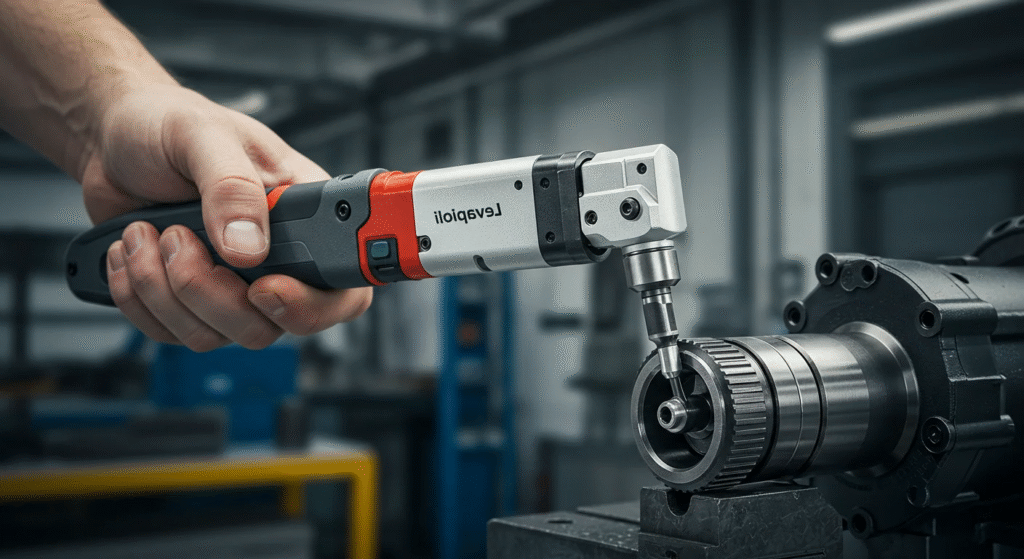In rapidly evolving industries such as designing, engineering, digital experience, and even gastronomy, certain ideas have come up that are defining how the market, professionals, and users speak with them. One such term that’s been making waves in creative and industrial circles is Levapioli. Levapioli has its roots in Italian workshops and has made its case in Balkan kitchens, but today it’s about something else entirely. It is about adaptability, change and versatile solutions.
The present article draws from two top studies of Levapioli. On the one hand, that of the etymology, essence and modern-day development of Levapioli. On the other hand, its evolution from machine to cuisine happens in a number of stages. Here’s everything you need to know about Levapioli: Learn what it is, where it comes from, why it matters, and how it is changing the way we design and build, consume and experience.
What Is Levapioli? Beyond the Buzzword
Levapioli is a philosophy about movement, transformation, and fluidity. It originated in Italian artisan circles as a hybrid term: “Leva” (lever, to lift) and “Pioli” (pegs or steps). Initially, Levapioli described tools, levers, pullers, and mechanisms that could pivot, retract, lift, or adapt to suit many tasks. This tool was invaluable in woodworking, mechanical assembly, and modular design, allowing craftspeople to manipulate and fine-tune materials with elegance and control.
Evolution Toward a Broader Concept
With industrialisation and digital transformation, Levapioli expanded from specific hand tools to a broader mindset: adaptability, multi-functionality, and relentless innovation. Whether talking about retractable balconies in architecture, folding bikes in mobility, or morphing user interfaces in tech, the principle remains the same: design for change, expect the unexpected, and use movement as a source of creative power.
Historical Origins: From Workshops to World Culture
Mechanical Roots
The earliest Levapioli were crafted for industrial tool manufacturing in post-war Italy, serving as movable support pegs, pullers, and levers that allowed artisans and engineers to work with complex assemblies without causing damage. By the 1980s, innovative designers and furniture makers used Levapioli to describe hidden mechanisms, such as folding chairs, telescoping tables, and modular shelving.
Culinary Tradition
Levapioli didn’t just stay in toolboxes. The ethos of adaptability made its way into culinary traditions, especially in Italy and the Balkans. Here, it signified creative cooking, a method for using simple, flexible recipes and ingredients that could change with seasons or availability, often evolving into dishes with regional twists and global appeal. Think small grilled sausages or rustic, dough-based treats, shifting flavour depending on culture and location.
Modern Applications: Where Levapioli Is Shaping the Future
Architecture & Industrial Design
- Retractable balconies, rotating walls, modular furniture, and kinetic art installations.
- Multi-position hand tools for ergonomic and versatile function.
- Collapsible bikes and urban mobility solutions efficiently adapt to space limitations.
Technology & Engineering
- Robotics with adaptive joints, telescoping limbs, and precision instruments for complex assembly or disassembly.
- Software metaphors, where Levapioli denotes code “modules” or operations able to unplug, shift, or reroute functionalities safely.
- User interfaces transforming according to context, optimising digital experiences through fluid design principles.
Fashion and Lifestyle
- Clothing that transforms or adjusts, convertible jackets, modular accessories, and smart fabrics.
- Interior design with furniture that morphs for different purposes, maximising small urban spaces.
Culinary Arts
- Levapioli-inspired dishes, flexible recipes changing meat, spices, or preparation with culture and season.
- Modern chefs reimagining tradition by infusing new ingredients and techniques.
Levapioli vs. Modular Design
While modular design focuses on assembling or swapping static parts, Levapioli is about kinetic transformation; movement is central. Modular systems provide order through parts, but Levapioli creates dynamic engagement, surprise, and adaptability.
| Criteria | Levapioli | Modular Design |
| Movement | Essential | Optional or static |
| Intention | Pivot/transform/adapt | Assemble/disassemble |
| User Interaction | Continuous engagement | Structured use |
| Symbolic Meaning | Adaptability & resilience | Interchangeability |
| Emotional Impact | Surprise, tactile satisfaction | Utility based |
The Psychological and Emotional Power of Levapioli
Humans crave creativity, novelty, and control. Levapioli-inspired systems and products encourage tactile exploration, generate “aha” moments, and foster emotional satisfaction. This makes them habit-forming, memorable, and marketable, the secret sauce behind beloved brands, acclaimed tech products, and unforgettable culinary experiences.
Sustainability and Future Trends
Levapioli’s philosophy dovetails with sustainability:
- Fewer, multifunctional tools and objects mean less waste.
- Designs optimised for changing needs and contexts allow for longer lifespans and reduced consumption.
- AI-augmented, bio-adaptive tools may soon respond to user intent or environmental factors in real time.
Expect retail spaces, digital interfaces, and AR/VR environments to increasingly leverage Levapioli logic, fluid layouts, responsive structures, and immersive, adaptable user landscapes.
How to Identify Levapioli in Everyday Life
Ask:
- Does it move purposefully or transform?
- Is the change central to its function?
- Does it adapt to new contexts?
- Is it surprising or engaging?
If yes to most, you’re interacting with something built on Levapioli principles!
FAQs About Levapioli
Is Levapioli a tool, a design principle, or a culinary dish?
Levapioli can be a mechanical tool, a design framework, a digital metaphor, or a culinary tradition. Its unifying theme is adaptability and transformation.
What industries use Levapioli?
Architecture, industrial and product design, urban mobility, robotics, software development, digital UX/UI, culinary arts, and fashion all draw on Levapioli logic for efficiency and creativity.
How does Levapioli differ from modular design?
Modular design means swapping static parts. Levapioli is about purposeful movement and transformation, making function and surprise central.
How did Levapioli originate?
It began in Southern European workshops and kitchen tables, as tools and dishes designed for flexible use. As design, tech, and culture evolved, it became shorthand for any adaptive solution.
Can Levapioli be applied in daily life?
Absolutely! Think adaptable furniture, multipurpose tools, dynamic apps, or recipes that change with what’s in your pantry. Levapioli means building flexibility into your world.
What are examples of Levapioli products or systems?
Folding bicycles, retractable furniture, convertible clothing, telescoping robotics, adaptive websites, and flexible recipes are all examples.
Why is Levapioli relevant today?
Our world faces space constraints, climate challenges, consumer demand for versatility, and rapid tech change. Levapioli lets individuals and industries navigate these with agile, innovative, and sustainable solutions.
Levapioli: The Movement for Tomorrow
Levapioli is much more than an Italian term or trending buzzword. It’s a design imperative, a culinary tradition, and a marker of forward-thinking innovation. By prioritising fluidity over rigidity and building for transformation, Levapioli isn’t just keeping up with change, it’s leading it.
Whether you’re a designer, engineer, chef, entrepreneur, or enthusiast, embracing Levapioli allows you to meet the future with solutions that surprise, delight, and endure.










